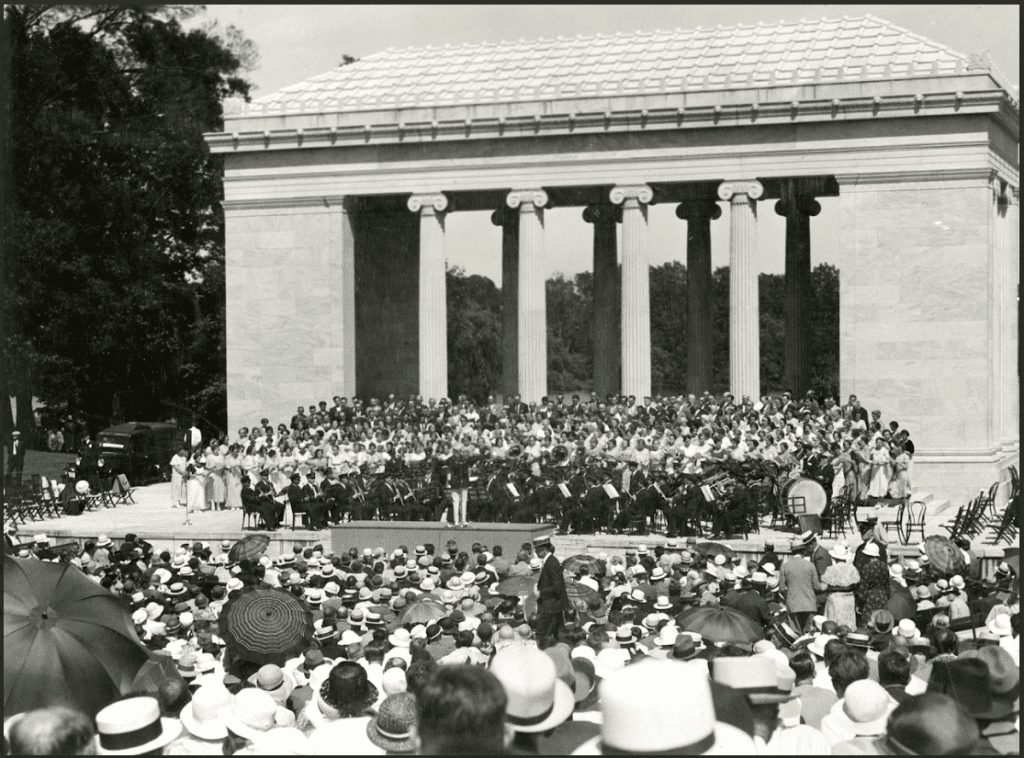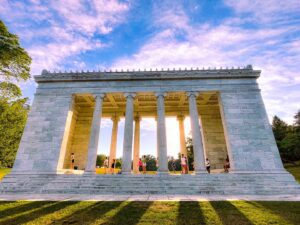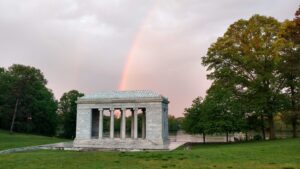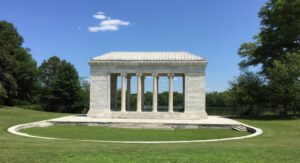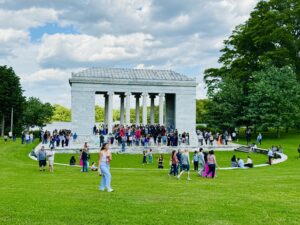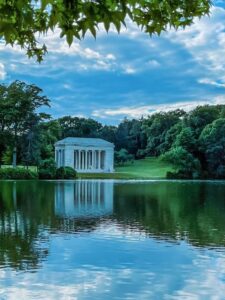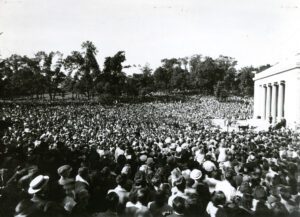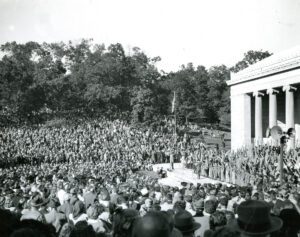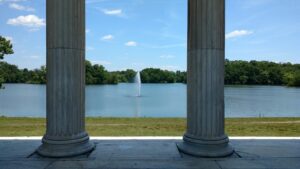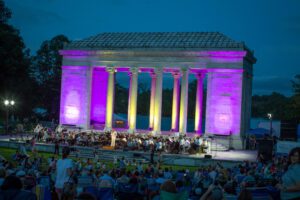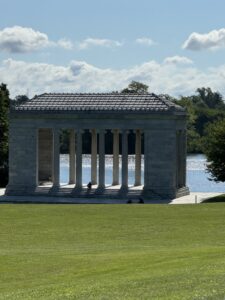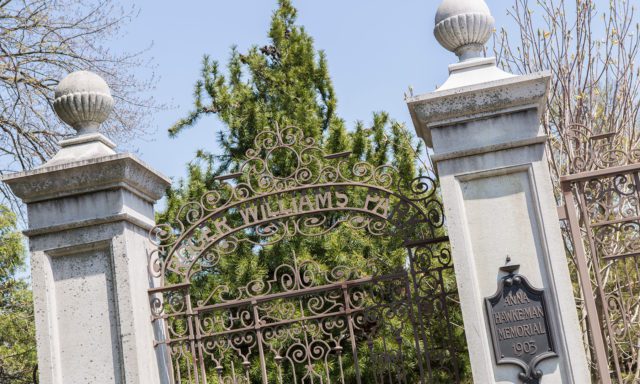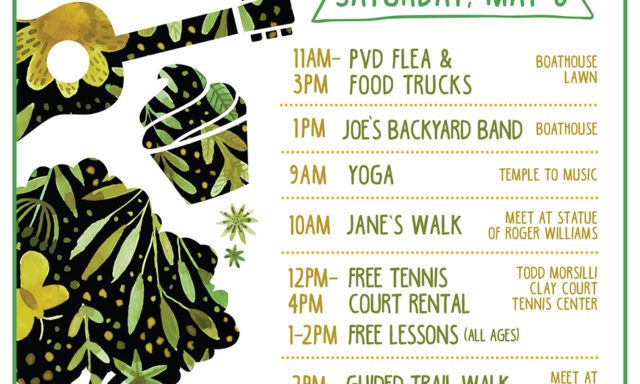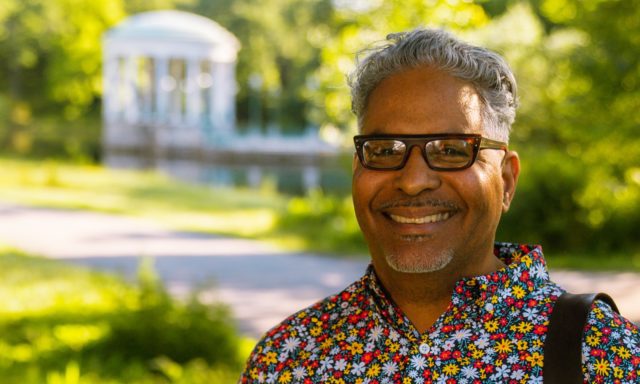“Here it is hoped that the people, to whom it is given, will gather for concerts, plays and other assemblies suitable in such an outdoor setting. It is theirs to have, to safeguard, and to cherish… It stands for the cultural interests of the community, which no city, however prosperous in a material sense, can afford to neglect. Its purpose is to minister to the inner and finer life, to stay man’s heart and sustain his soul.”
-Roger Williams Park Temple to Music dedication, September 21, 1924
Sundays in the Park
Roger Williams Park is well known for its monuments and memorials. The largest one of all there is the backdrop for many events and occasions, although the name of the man who made it all possible has quietly receded in time. Still, we guess that William Curtis Benedict would be pleased to see all the uses and occasions his monument to music and art has been put to in the years since he provided for it.
The Temple to Music didn’t arrive out of thin air on the shores of Cunliff Lake, though sometimes it almost appears to, on foggy mornings in the park.
Originally called the Monument to Music, the Temple — celebrating its 100th anniversary this year — has welcomed events large and small, from campaigning presidential candidates to flurries of prom photos snapped each spring, yoga classes on quiet mornings, Pops in the Park on summer nights, and more.
For the people
Born in Pawtucket in 1840, Benedict started his career as a teller at Peoples Savings Bank where his uncle was president. During the Civil War, he served in the Slater Drill Corps. After war’s end, he returned to Providence, made his home on College Hill, and eventually directed the largest olive oil import business in the country from a spot on South Water Street. Today, he is buried in a family plot at Swan Point Cemetery, with little to indicate the large monument left in his name less than 10 miles away.
The director of the park’s Museum of Natural History, Renée Gamba, says that Benedict was a thorough New Englander and enjoyed a reputation for being honest and trustworthy. In his off hours, he enjoyed Providence’s flourishing arts scene, as a member of the choir at the First Universalist church downtown, where he sang tenor, and as a member of the Providence Art Club. Records indicate that Benedict was devoted to elegant taste and to his friends.
Benedict had traveled to Greece for business and dedicated $75,000 in his will (an equivalent in the millions today) to build a monument to music at Roger Williams Park, left in the care of a small committee of friends and fellow businessmen. Benedict’s gift stipulated that his gift provide for cultural needs and be free to the public.
Inspired by Benedict’s business interests in Greece, the committee decided on a classical Greek style for the memorial building, according to a Providence Journal article about its grand opening in 1924. The marble for the project came from Proctor, Vermont. Its design was inspired by ancient Grecian temples.
The Temple debuted in 1924, designed by architect William Aldrich, son of U.S. Sen. Nelson Aldrich. Aldrich designed the Temple to sit in a natural amphitheater encircled by oaks on the nearby lake, with a classical design celebrating the origins of music and architecture, in accordance with Benedict’s wishes.
The Temple was a “small” project for Aldrich who designed and built several other notable structures, including the president’s house at Brown University, the original RISD Museum and the memorial chapel of the American Cemetery and Memorial in Normandy, France.
With guidance from the steering committee, Aldrich set out to follow Benedict’s wishes to create a place of beauty, set in a public park to cultivate a love of the fine arts in those who might visit it.
The opening of the monument drew a crowd of thousands to hear the U.S. Marine Band, Marie Sundelius of the Metropolitan Opera and the 284-member Providence Festival Chorus; 50,000 thronged to the grassy hillside to witness their performances. The Journal termed the structure an “architectural melody in marble.”
Initially, the Temple was designed for summer open-air theater and early productions gave city residents just that — Electra, the Pipes of Pan, and more, Greek for the masses. Over the years, Temple use changed with the times: Sundays-in-the-Park entertained city residents during wartime. Thousands turned out for the offered performances, visiting dignitaries spoke at the Temple, and high school bands held annual concerts there.
Italian Day was an early popular event, celebrating the new immigrants from Italy in Providence, and the Swedish American Singing Society performed there, too.
Even today, the Temple’s grassy grounds are one of the largest outdoor spaces in Rhode Island, a gathering place for use by nonprofits staging walkathons, school cross-country meets, public concerts and several annual festivals. Heather Manning, facilities coordinator for the City of Providence, says that the free annual concert staged by the Rhode Island Philharmonic every year in August brings in thousands and the annual festivals held at the Temple can bring up to 10,000 to the park.
The ancient materials and inspiration have had to contend with the New England landscape and weather, so care has been taken over the years to keep the Temple in good shape with renovations and repair as necessary, including restoration in 1975 and 2022.
Over the years, the events and groups flocking to the Temple have changed, but it’s still a center and highlight of the park, and now a backdrop for life’s individual and more personal events, too — the first sledding ride, prom photos on a warm May night, spring’s first picnic.
“These events have drawn thousands of people to the Temple to Music and to Roger Williams Park,” says Gamba. “It means something to people.”
To learn more about events happening in Roger Williams Park this year, visit rwpconservancy.org or email [email protected] to be added to the Roger Williams Park Conservancy’s email list.
By Kristen Curry
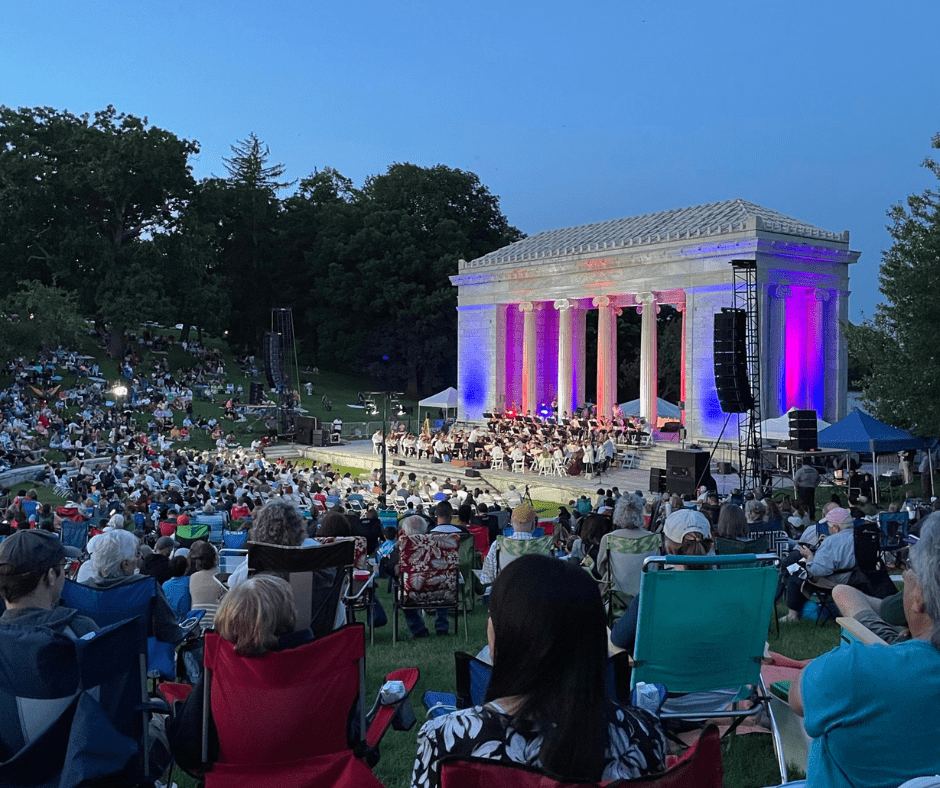
- Benedict Temple of Music, Roger Williams Park, Providence, R.I.
- Benedict Temple of Music, Roger Williams Park, Providence, R.I.
Photos:
-from Museum archives
-Providence Public Library
-snapshot

